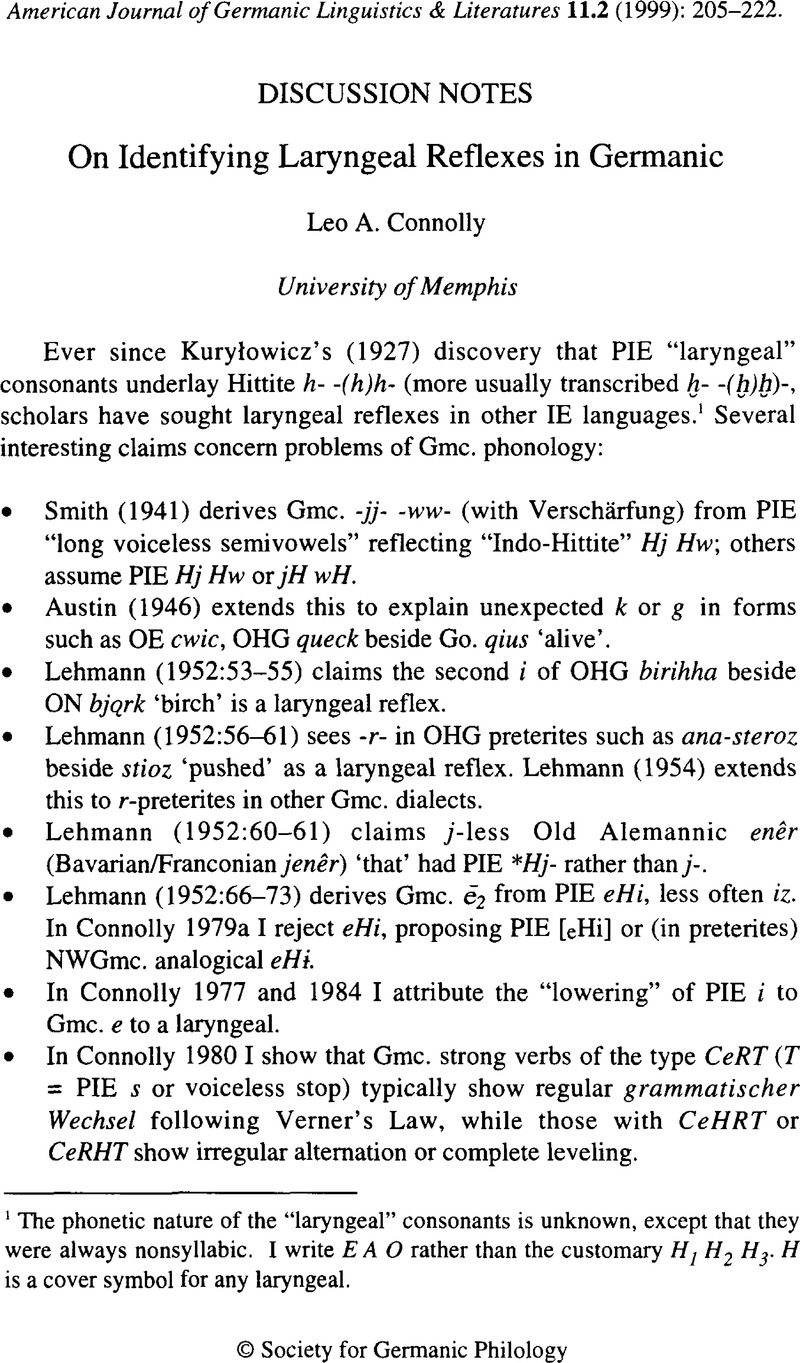Crossref Citations
This article has been cited by the following publications. This list is generated based on data provided by Crossref.
Connolly, Leo A.
2010.
Verba Pura Problems: Proto-Germanic Forms withj, Unexpectedē1.
Journal of Germanic Linguistics,
Vol. 22,
Issue. 3,
p.
221.





